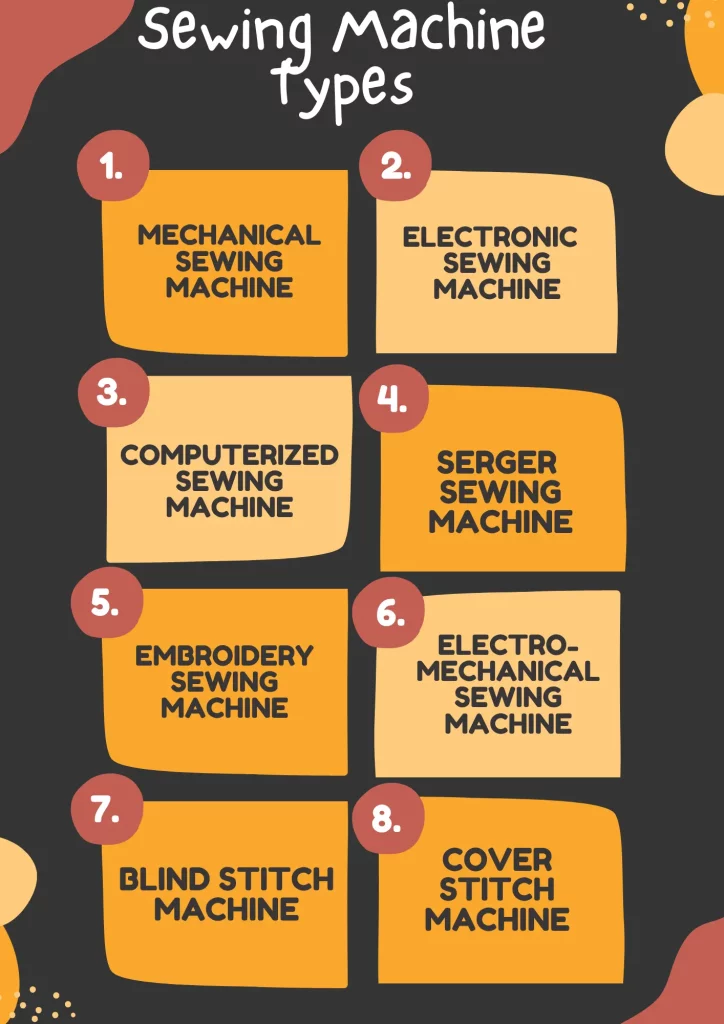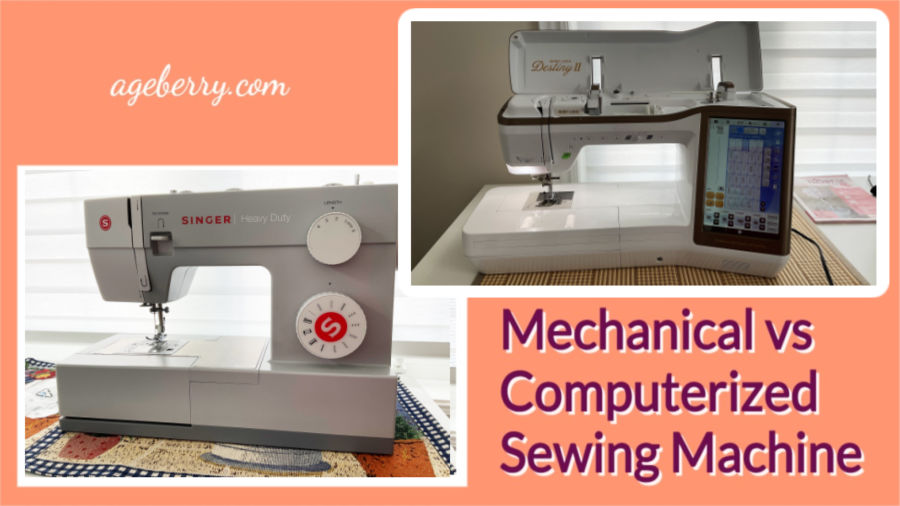Unknown Facts About Kenmore Sewing Machine Manuals
Wiki Article
The Only Guide to Kenmore Sewing Machine Manuals
Table of ContentsAll about Kenmore Sewing Machine ManualsThe 9-Minute Rule for Kenmore Sewing Machine ManualsThe Main Principles Of Kenmore Sewing Machine Manuals Some Known Incorrect Statements About Kenmore Sewing Machine Manuals Some Known Factual Statements About Kenmore Sewing Machine Manuals
Embroidery is a beautiful and sensible pastime that can be incredibly rewarding. Whether you're an expert tailor, a style enthusiast, or a total newbie to stitching, you should buy an excellent stitching equipment. You'll have to make a decision in between an electronic and a mechanical embroidery device. Both have advantages and disadvantages, so it's vital to evaluate the advantages and drawbacks before acquiring.
The prices can range from hundreds to thousands of bucks, making them significant financial investments for novices. In comparison, mechanical sewing machines come with lower prices and are optimal for individuals wanting to learn embroidery without spending as well a lot at first. While digital makers have a variety of attributes, they can be tougher to figure out for individuals that are accustomed to mechanical stitching equipments.
The Ultimate Guide To Kenmore Sewing Machine Manuals
Luckily, Montavilla Stitching Centers has whatever you need to get begun! We have a huge option of stitching devices and equipment for you to select from. Store with us today to discover anything you require to grab your very first craft or finish that project you place on the back heater.You can upload now and register later on. If you have an account, indication in now to publish with your account. Your article will certainly call for moderator authorization before it will show up.

You've obtained a new sewing device! This tool will certainly make every one of your sewing desires come real. However, one little step has to be taken prior to you can start your sewing journey maker setup. Each device is various, so the details you discover exactly how to establish a bro sewing equipment could differ from exactly how to establish a singer sewing device.
Not known Details About Kenmore Sewing Machine Manuals
The details we supply will apply to most sewing makers, however some have unique features that can add a step to the procedure. Maintain your devices and sewing space organized for very easy ease of access. Once you've evaluated the device setup guidelines, it's time to accumulate all the essential devices. Right here are some helpful devices to have that every embroidery equipment configuration process will require: Make certain that your embroidery maker is linked into an ideal power resource which the power cable remains in good problem.Consult your maker's manual for advice on just how to insert the needle appropriately. Elevate and reduce the presser foot using the presser foot lever. This is important for putting and getting rid of material. A screwdriver might be one of the most valuable device for any kind of stitching maker. It helps the setup procedure and continues its usage as adjustments come to be required and threading/needle insertion arises.
:max_bytes(150000):strip_icc()/spr-product-singer-stylist-7258-sewing-quilting-machine-hwortock-024-c73508b29dc749e8b82dc9ec23073154.jpeg)
The real configuration of the equipment itself must be pretty uncomplicated most sewing devices come prebuilt, so there is no need for an electrical design degree - kenmore sewing machine user manual. It can be as easy as positioning the machine on a flat surface area and plugging it into the power supply. However, if there specify guidelines and steps for arrangement, they can be found in the directions.
Kenmore Sewing Machine Manuals Can Be Fun For Everyone
Threading your machine can be overwhelming, yet as lengthy as you recognize the string course, it's quite simple! The thread path for your stitching maker will be set out in your maker handbook. The thread course typically consists of overviews and stress discs assisting the thread from the spool to the needle.Engage the bobbin winder by pressing it towards the right. Start the stitching maker. The bobbin ought to wind with the string equally. Once it's full, cut the string and remove the bobbin from the winder. To put the bobbin, open up the bobbin situation or remove the cover, depending upon your equipment's style.
Draw the thread via the bobbin situation's port, leaving a few inches of thread dangling. Finally, shut the bobbin case or cover, guaranteeing it's appropriately protected. This step makes certain the bobbin is properly put and prepared for usage during embroidery. Finally, you'll desire to thread the upper string by following the string path suggested in your embroidery device's handbook.
After that, string the needle from front to back. See to it the string is appropriately seated in the stress discs, and leave a couple of inches of string dangling from the needle. This appropriately prepares your stitching maker for the stitching process. Achieving professional sewing outcomes depends on mastering stress and stitch setups on your sewing machine.
A Biased View of Kenmore Sewing Machine Manuals
Lighter materials typically call for lower stress, while heavier ones might need greater stress. Refer to your equipment's handbook for recommended settings.Stitch setups govern the kind, length, and width of stitches. Most modern-day machines use a variety of alternatives, from basic straight and zigzag stitches to ornamental choices. Utilize the stitch selector dial or buttons on your equipment's control panel to choose a stitch. Make certain it's snugly connected prior to starting your job. Properly setting up needles and feet makes certain precise and reliable embroidery, allowing you to deal with a vast array of sewing jobs with confidence. Whatever is in area it's time to see if it was all done correctly. Transform on the machine and see if it works! Order a piece of scrap material and run a fast examination sew to see if everything functions properly. Constantly elevate the presser foot prior to threadingand stitching. Neglecting to clean, oil, or preserve your embroidery equipment can lead to poor performance and even damages gradually. Follow your maker's upkeep timetable as laid out in the user manual. If your device permits bobbin tension adjustment, guarantee it's established appropriately. Before beginning your job, testing the device's settings on scrap textile to look for any type of concerns with stress, stitch length, or stitch quality is crucial. https://medium.com/@toddsmith33101/about. A boring or broken needle can trigger material grabs, missed stitches, or unequal joints. Modification the needle consistently to keep sewing top quality. Constantly hold the strings from both the top and reduced bobbins when you begin stitching to prevent tangling or string grabs. As briefly stated in the previous area, routine maintenance assists preserve the efficacy of your sewing machine. Sewing equipments require a little R&R, also, so don't be stingy on the oil bathrooms. Without appropriate maintenance, the sewing device can be subject to more constant breakdowns and threading troubles. Tidy your maker after every use. Developed in the very first industrial revolution, stitching makers decreased the manual time of stitching textile and different other materialswith string. The mind behind the development of the initial functioning sewing machine is considered to be Englishman Thomas Saint in the year 1790. Since the layout of the stitching maker, clothes industry experienced a huge increase in efficiency and efficiency. We have a regular sewing machine, which is one of the most streamlined version created for bachelor use of private More hints products and having a solitary stitch kind. We have a contemporary sewing equipment, which comes with glider whereby material can slide in and out, making the stitching procedure automatic and additionally saving time. To get going with a sewing equipment, first, you need to recognize exactly how to run one. There are plenty ofstitching machines available which are specialized for various types of uses, and these equipments require a various kind of skill for a private to run it. Starting from a wrecked dress to standardizing garments in factories, there are lots of typical and sophisticated uses stitching devices. It is utilized to sew garments. Home decor products like various furniture covers, bedding products, cloth flowers or other decorations, pillows, pillow shams, table linens, paper napkins, going shopping bags, custom-made child seat, computer cover etc need embroidery machine stitches. Stitches required in stuffed toys, wall hangings, doll clothing etc are done by sewing device. any type of type of pattern lays out can be made by punching openings in published patterns making use of no string. To achieve smaller stitches than the routine hand sewage systems, sewing makersare made use of. It can be likewise utilized to repair clothes. It can offer innovative people an outlet for their imagination. In a general sense, a sewing device is utilized to sew fabric pieces with each other with string in a mechanical fashion. Embroidery equipments can additionally be made use of for quilting, a procedure where 2 or more layers of fabric are stitched, making a thicker cushioned multilayer fabric such as Denim denims.Report this wiki page